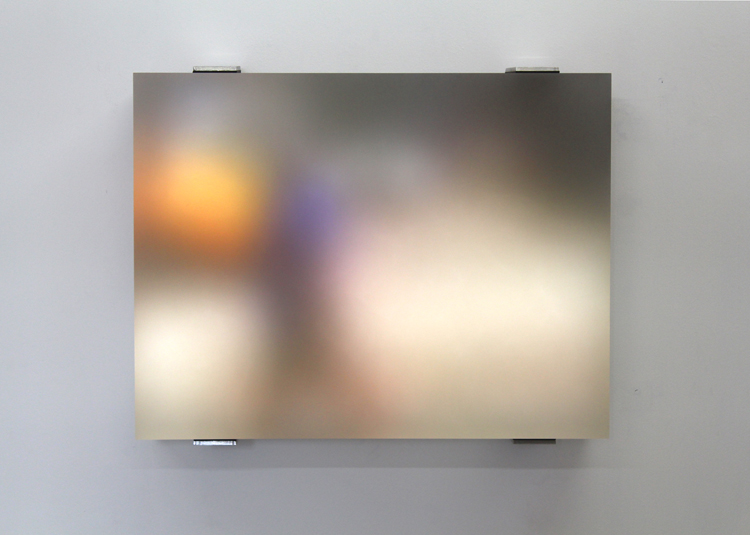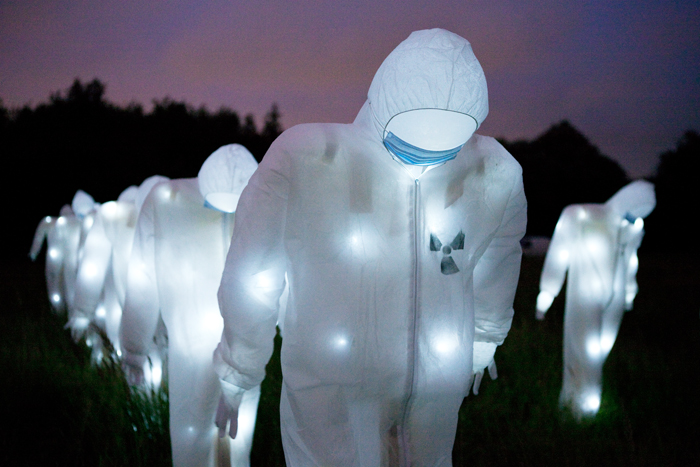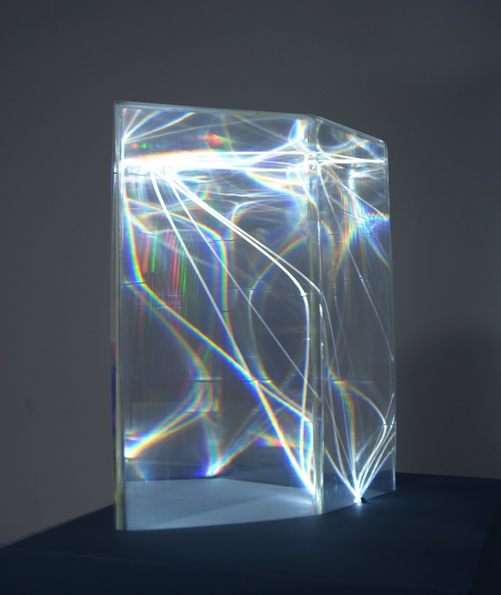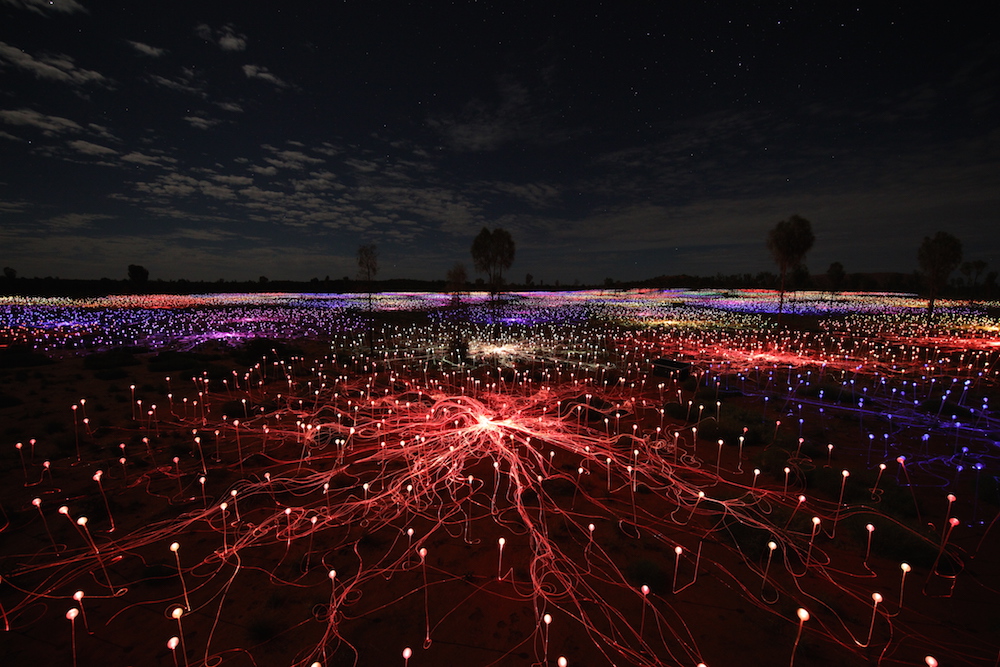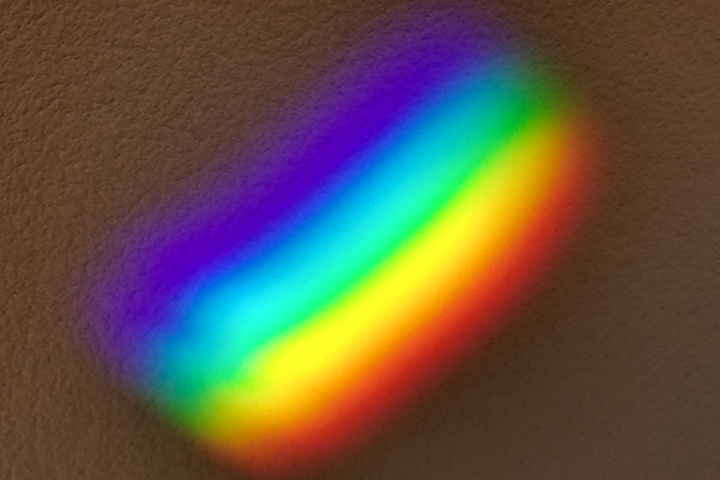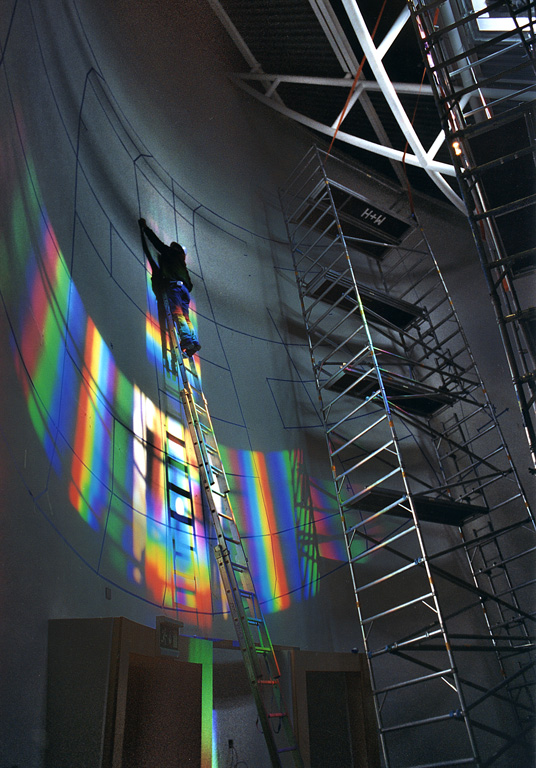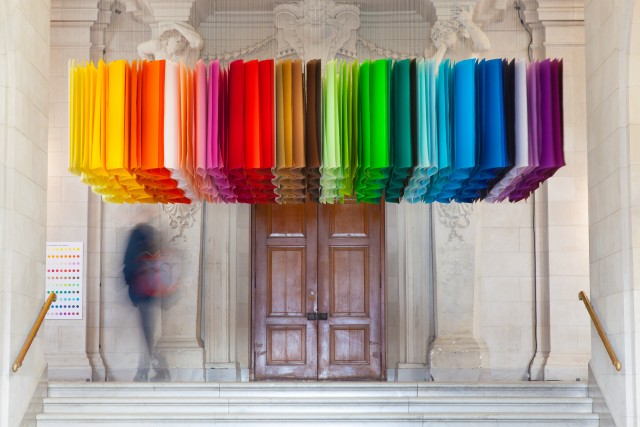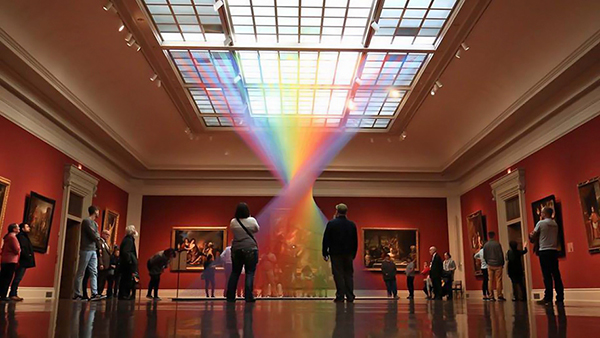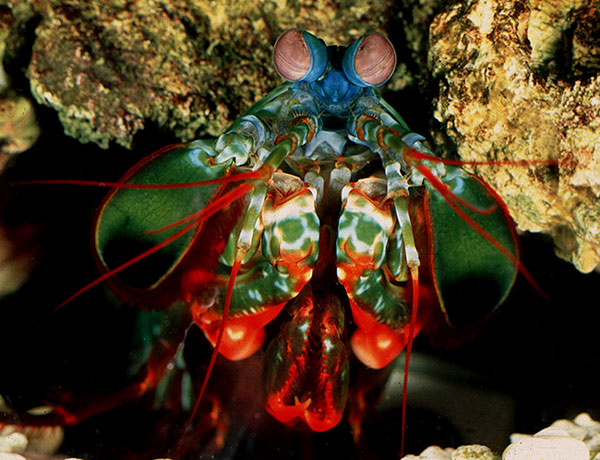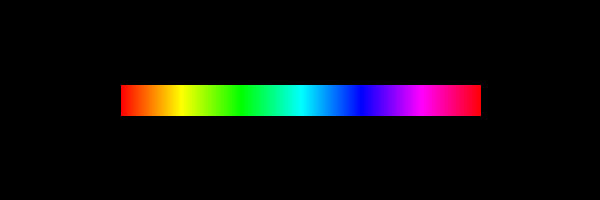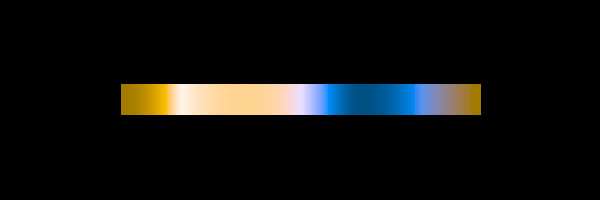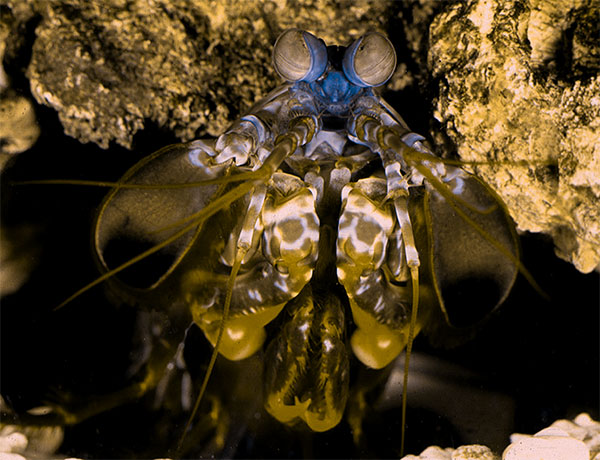Bioluminescence – Crystal Jelly
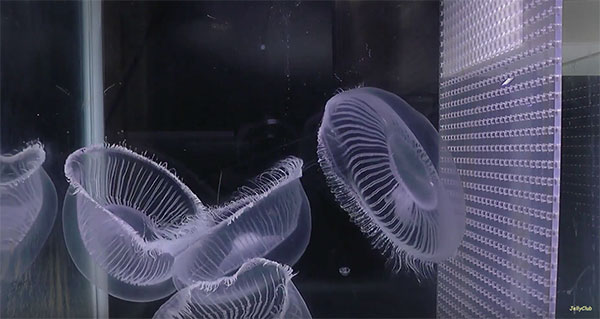
Photo via ‘Aequorea victoria’ video
The transparent and virtually colorless appearance of the ‘crystal jelly’ belies its fluorescent contribution to the advancement of biological imaging. Bioluminescence is present as a ring of green fluorescence at the rim of the umbrella shape – and only visible in ultraviolet light.
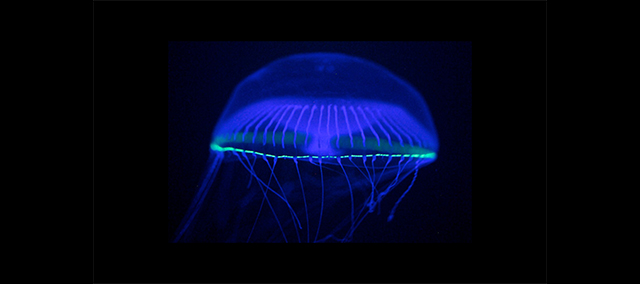
Photo via Toochee
Blue LED lighting reveals Aequorea victoria’s ring of fluorescence. It is this ring that makes the ‘crystal jelly’ famous. It is the traditional source of green fluorescent protein (GFP) used in fluorescent biological imaging.
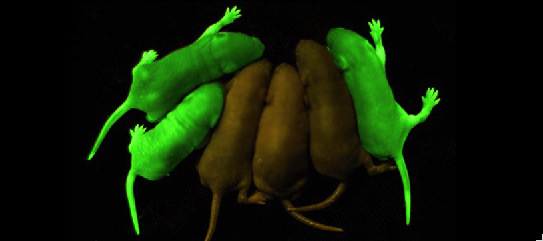
Photo via National Institute of Health
Green Fluorescent Protein can be introduced into living creatures for monitoring gene expression and proteins of specific biological processes. This bizarre image visualizes the continued presence of the green fluorescent protein in the genome of the male parent to that of three mice in the litter of six. The vibrant green of GFP becomes visible in the presence of light in the UV range.

Photo via OIST
The image is a beautiful representation of the GFP marker for sensory neurons in pathways of neural activity in the tiny round worm C. elegans – used for studies in genetics and neurology. ASH neurons have the function of avoiding potentially harmful stimuli. It is extraordinary to have the ability to visualize neural function with this degree of microscopic magnification.


